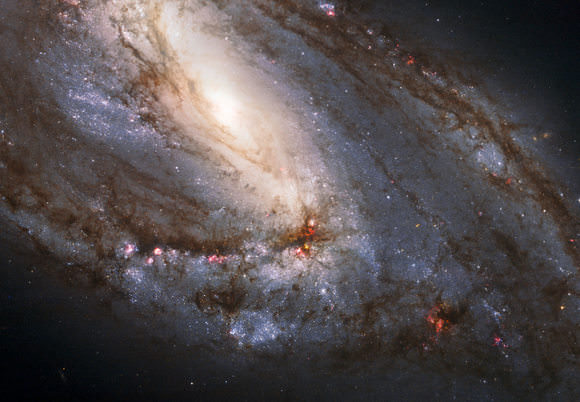[/caption]
This isn’t your basic spiral galaxy, but perhaps it used to be! Hubble’s Advanced Camera for Surveys has captured this beautiful view of the biggest child of the Leo Triplet, M66. Its asymmetric spiral arms and an apparently displaced core was mostly likely caused by the gravitational pull of the other two members of the trio. Talk about sibling rivalry!
M66, is located at a distance of about 35 million light-years in the constellation of Leo. Together with Messier 65 and NGC 3628, Messier 66 is one third of the Leo Triplet, a trio of interacting spiral galaxies, part of the larger Messier 66 group. While M66 is the biggest — it is about 100,000 light-years across — the gravitational influence from the two neighboring galaxies have distorted the one orderly spiral arms, making them appear to rise above the central core.
The striking dust lanes and bright star clusters along the spiral arm — pictured in the blue and pinkish regions of the image — are key tools for astronomers since they are used as indicators of how the parent galaxies assembled over time.
Messier 66 boasts a remarkable record of supernovae explosions. The spiral galaxy has hosted three supernovae since 1989, the latest one occurring in 2009. A supernova is a stellar explosion that may momentarily outshine its entire host galaxy. It then fades away over a period lasting several weeks or months. During its very short life the supernova radiates as much energy as the Sun would radiate over a period of about 10 billion years.


Get your kicks on M66!
LC
Sweet!